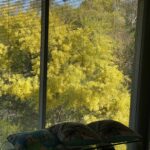Paronella Park is an historic park and garden complete with a crumbling Spanish castle in the depths of the rainforests of tropical north Queensland.
History
Paronella Park was built by José Paronella, who was from Catalonia in Spain. He came to Australia in 1911 and worked as a cane cutter. He began Paronella Park with his wife Margarita in 1929 and completed the building by 1938. The house and garden was open to the public in 1935 and there was a dance hall, a theatre for screening movies, tennis courts, refreshment room, a tea garden and a children’s playground. There were also boats for hire on the river.
When Paronella was built, José did not understand the climate of tropical north Queensland. Many of the buildings and structures have been washed away by floods because they were built below the flood levels. The porous concrete structures were reinforced with heavy steel railway tracks. These have now rusted adding to the deterioration of the Park’s marvellous buildings. Termites too have attacked some structures which were built of wood.
What remains today appears to be hundreds of years older than its true age but this creates the image of a lost paradise, a fantasy garden hidden in the depths of the rainforest.
Garden features
Tunnel of love – This was built through the hillside with candles lighting the way to a waterfall and water feature at the end of the tunnel. It was intended to have lighted aquariums along the walls of the tunnel but today the only animals inhabiting the tunnel are tiny bats which have formed a colony on the tunnel roof. The tunnel comes out at a small waterfall known as Theresa Falls which José Paronella named after his daughter.
Waterfall and suspension bridge – A suspension bridge spans the gorge directly over the gushing waterfall that carries water through the garden and over an impressive waterfall.
Ruins – There are ruins of old tea rooms, houses and a hydroelectric plant which provided power for the site but was since destroyed during floods.
Native plants – Some of the rainforest plants include:
- giant ferns (Angiopteris evecta)
- cadaghi (Eucalyptus torelliana), which is a type of gum tree rarely found in rainforests. Here the trees are home to a colony of metallic starling (Aplonis metallica); and
- stands of kauri pines (Agathis australis), which are native to New Zealand.
Further information
Paronella Park is open to the public everyday except Christmas Day. It is situated near Innisfail, North Queensland about an hour and a half south of Cairns. Sites are available for camping.
Address: Japonvale Road (Old Bruce Highway), Mena Creek, Qld, 4871. Phone: (070) 65 3225.
Admission: $8 for adults, $6.50 for pensioners and seniors and $4 for children.
Getting there: Travel by car (the park is well signposted) or book a coach trip from Cairns. Northern Experience Tours run daily tours from Cairns to Paronella Park (except Sundays). Bookings can be made with the coach company directly, the Queensland Government Travel Centre or your travel agent. Phone: (070) 41 4633.
Further reading
The Spanish Dreamer – A Biography of José Paronella by Dena Leighton (Rosemont Press, 1997) Rrp. $19.90 when purchased from Paronella Park. Mail Order is available from the park which costs $19.90 plus postage and handling. Phone: (070) 65 3225.



